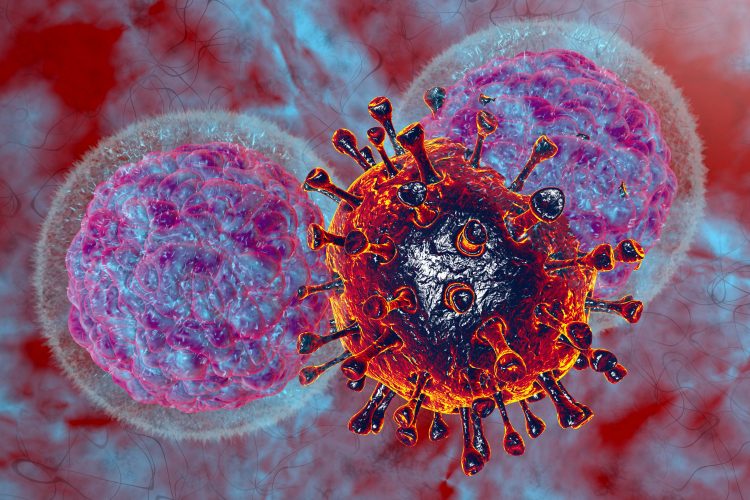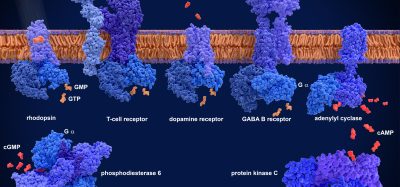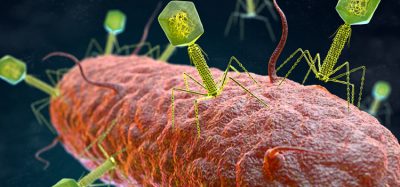Harnessing natural killer cells to combat age-related diseases
Posted: 28 May 2024 | Dr Robert Hariri (Celularity), Ellen Capon (Drug Target Review) | No comments yet
In this Q&A, Celularity’s CEO and founder Dr Robert Hariri details the preclinical research that indicates that placenta-derived unmodified NK cells and genetically modified NK cells can target and selectively eliminate cells expressing stress ligands.


How do senescent cells contribute to degenerative diseases, cancer, and immuno-senescence?
Senescence is a central hallmark of aging. Telomere damage, epigenetic dysregulation, DNA damage and mitochondrial dysfunction are primary drivers of damage in aging. Several of these drivers of damage can induce senescence. Senescence can in turn drive the consequential clinical hallmarks of aging: stem cell exhaustion, proteomic dysregulation and chronic inflammation. Other responses to damage, such as metabolic dysfunction and nutrient signaling disruption, are also integrally linked with the senescence response. Senescent cells are cells that have accumulated defects during their lifespan and cease to divide — they take on a phenotype where the cells secrete a number of factors, which promote inflammation, a process termed ‘inflammaging,’ and the development of cancer in adjacent cells.
These are highly inflammatory and damaging factors. For example, senescent cells in a joint can contribute to the development of arthritis, in blood vessels they can contribute to the development of atherosclerosis, in the brain they can contribute to the development of dementias, etc. Essentially, senescent cells in any organ can promote and support the transformation from normal cells to cancerous cells.
Senescent cells in the immune system cause the entire system to function abnormally or defectively and subject the individual to a whole host of consequences resulting from immune dysfunction — from being more susceptible to infectious disease to having a defective response to injury. Ultimately, senescent cells are an important driver in the development and progression of nearly all diseases, including degenerative diseases and cancer.
What is the role of the senescence associated secretory phenotype (SASP) in the progression of inflammation and tumours?
Senescence associated secretory phenotype (SASP) is associated with senescent cells that secrete high levels of proinflammatory cytokines, immune modulators, toxic factors and proteases. This is responsible for promoting inflammation, degenerative diseases, and cancer.
What is the unique immunobiology of the placenta, and how is this utilised in Celularity’s technology platform?
The placenta is nature’s universal donor tissue. It’s a product of the foetal genotype and has a unique tissue type that the mother accepts for nine months without rejecting, even though she’s imperfectly matched to it. This is best evidenced in surrogate pregnancy in which the placenta that the surrogate mother carries is not related to her, and yet, she doesn’t have an immunologic conflict with that tissue. That is the basis for why cells from the placenta can be used in allogeneic applications — meaning as a one-size-fits-all product — without the need to match a donor to a recipient.
In addition, we see the placenta as a life support and defense system that evolution has designed to protect the developing foetus. It does so by protecting the foetus from threats that might exist during pregnancy, including infectious disease threats, transfer of malignancy threats and more. All of these learnings are fundamental in how we deploy the technology to treat diseases.
How do CYNK-001 and CYNK-201 work in targeting damaged and abnormal cells?
CYNK-001 is our unmodified natural killer (NK) cell, and CYNK-201 is our gene-edited NK cell. CYNK-001 works by using intrinsic mechanisms to attack and destroy cells that express stress ligands. In CYNK-201, we can enhance that activity by allowing the cells to work in combination with antibody therapeutics or to enhance the persistence and tolerance of these cells with those edits.
What are the potential implications of Celularity’s approach in addressing age-related diseases?
Celularity is the only company that has multiple clinical stage assets that can be used to address age-related disorders and diseases. Among those assets are:
- Our biomaterial products, which can be used to address degenerative soft tissue and musculoskeletal problems like the ligaments and joints.
- Our NK cells, which are a tool we can use to eliminate senescent cells.
- Our Allogeneic Placental Pluripotent Cells (APPL), which can be used to augment a patient’s stem cell reservoir to address stem cell exhaustion, which occurs during aging.
About the author
Dr Robert Hariri, CEO and founder of Celularity


Dr Bob Hariri is an accomplished surgeon, biomedical scientist, and serial entrepreneur in two technology sectors, biomedicine and aerospace. He is the chairperson, founder, and chief executive officer of Celularity, Inc., one of the world’s leading human cellular therapeutics companies and Co-Founder of FountainLife, a precision medicine company.
Dr Hariri was the founder and CEO of Anthrogenesis Corporation, and after its acquisition by Celgene Corporation, served as CEO of Celgene Cellular Therapeutics. He also co-founded the genomic-based health intelligence company, Human Longevity, Inc. Dr Hariri has served on numerous public boards including Cryoport (NASDAQ:CYRX).
Related topics
Genetic Analysis, Ligands, Targets
Related conditions
age-related neurological disease, Aging
Related organisations
Celularity
Related people
Dr Robert Hariri (Celularity)








